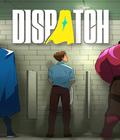
Genre: Action/Adventure
Publisher: THQ
Developer: THQ
Release Date: October 17, 2006
 Scooby Doo: Who's Watching Who is the latest game based on the popular Scooby Doo franchise. In recent years, there have been a number of Scooby Doo games, even since the aging franchise was reborn as What's New, Scooby Doo on the Warner Brothers network. However, most of these games have been uninspired platformers only loosely based on the world of Scooby Doo, and most are best forgotten. Thankfully, while it isn't without its flaws, Scooby Doo: Who's Watching Who manages to capture the feel of the series in a game that should be good for young fans.
Scooby Doo: Who's Watching Who is the latest game based on the popular Scooby Doo franchise. In recent years, there have been a number of Scooby Doo games, even since the aging franchise was reborn as What's New, Scooby Doo on the Warner Brothers network. However, most of these games have been uninspired platformers only loosely based on the world of Scooby Doo, and most are best forgotten. Thankfully, while it isn't without its flaws, Scooby Doo: Who's Watching Who manages to capture the feel of the series in a game that should be good for young fans.
Scooby Doo: Who's Watching Who opens with the Mystery Inc., gang being invited to a reality TV show called Ghost Scene Investigation. The GSI team's popularity has been failing in the wake of the Mystery Inc.'s successful cases, and now the two teams are going head to head to see who is really the greatest detective team. The game is divided into four different gameplay segments, with each segment putting you in direct control of one of the Mystery Inc., team, with the noted exception of Daphne. While you'll be spending most of the game in control of Scooby Doo, the rest of the gang has their own segments as well.
First and foremost is Scooby, whose segments fit squarely into the platformer genre, and never come out. You'll mostly be controlling the cowardly Great Dane himself. Scooby is ordered by Fred to search for clues and traps in order to help the Mystery Inc., gang solve their current case. Scooby is forced to do this by exploring the deathtrap-filled rooms and hallways of their current location. Masked henchmen and perilous terrain will do their best to stop Scooby from finding the essential Clues. While these can't actually harm the dog, every misstep drains some of Scooby's "courage" bar, and too much results in a game over.
Luckily for him, Scooby Doo's a lot more courageous and agile in the game than in the show. Rather surprisingly considering his usual behavior, Scooby is quite the combat machine in Who's Watching Who. He is capable of performing a dashing tackle attack that knocks baddies backwards but does minimal damage, and a spin attack that does heavy damage to anything it touches. Beyond that, Scooby also has access to a number of power ups, which you collect and then "feed" to him using the touch-screen by dragging them from the inventory to Scooby's mouth. The veggie burger makes Scooby invincible, the ice cream causes enemies to be frozen in place, and the chili pepper heavily increases the power of Scooby's spinning attack. Sadly, Scooby's basic attacks are so powerful, and using items is so awkward, that most of them will just sit in your inventory.
The one thing Scooby can't fight is the incredible repetitiveness and linearity of the stages. In theory, clues and traps are supposed to be hidden throughout the stages, but each stage is a straightforward and linear exercise in moving forward and hitting the same two foes over and over. clues and traps are all out in the open, and no special work is required to find either. After the first couple of stages, searching for clues quickly becomes a tedious exercise, which is rather surprising, considering the game's short length. Power-ups and health items are incredibly common, and "losing his courage" only forces Scooby to return to the last checkpoint, which are plentiful.
Scooby isn't always courageous, however. When the "boss" monster of a stage appears, Scooby loses heart, and it is up to Shaggy to carry him from danger. Shaggy's segments play out like Warioware, or other quick mini-games, and he has to keep ahead of the monster or suffer a grim fate. Players slide the stylus horizontally across the bottom screen to make Shaggy run, and moving it upwards causes Shaggy to jump over lower obstacles. The biggest use of the stylus comes when a hazard appears in Shaggy's path. Be it a blocked doorway or a sea of slippery fish, each hazard begins a short and easy mini-game. Completing it allows Shaggy to get by safely, while failing causes Shaggy's courage to falter. Too many failures, and the game's over. Shaggy's segments are actually among the most enjoyable in the game because they're fairly quick and simple, but they last just long enough and have just enough variety to keep things fresh.
Besides looking for clues on foot, sometimes the Mystery Inc., crew has to use their iconic Mystery Machine to search other locations. In these situations, players take control of Fred as he drives the Mystery Machine in a number of various challenges. Unsurprisingly, the driving segments play like a racing game. Players can use the face buttons or the touch-screen to control the Mystery Machine, but it's strongly recommended that you use the face buttons, as the touch-screen control is touchy and difficult to use. No two challenges are the same, and each has a specific goal you must achieve, be it defeating your rivals in a car race or playing a stripped-down version of Crazy Taxi to save avalanche victims.
Like Scooby, Fred has access to three power-ups to aid him in his mini-games, although these are use instantly and can't be stored, like Scooby's items. The veggie burger grants Fred invincibility, the chili pepper grants a speed boost, and the ice cream causes any nearby items, clues or traps to be sucked into the Mystery Machine as it drives by. For a game within a game, these driving levels are surprisingly well done. They're smooth and incredibly easy to control, and their variety is deeply welcome after more of Scooby's tedious exploration. The only real complaint is that they are a bit too easy, but for a children's game, that is a small problem indeed.
Of course, all of these clues would be worthless without Velma. Once Scooby has gotten clues, he can bring them back to The Mystery Inc.'s resident brain to analyze. The analysis segments of the game are pretty interesting in concept, if flawed in execution. Velma has access to a number of detective tools, such as fingerprint powder and a magnifying glass, as well as Scooby Doo's expert nose. Players can use each tool to check the clue, and successful analysis provides a hint about the identity of the real criminal. Once a player has enough evidence, they can choose to identify the culprit, and this is where the real flaw of the analysis segments comes into play. Even for a kid's game, the "analysis" is far too obvious. As soon as you check the first clue, you will know who the criminal is, and the only reward for finding more clues than you need is a better "ranking" at the end of the stage.
Once you've identified the criminal and have all the necessary traps for the plan, all that is left is to catch him or her. The "catch" segments are really just extended versions of Shaggy's mode from earlier. Players must use the stylus to run away and avoid obstacles while being chased by the villain of the week. The only real difference is that this time, Shaggy also has to play new mini-games to spring a trap on the criminal. However, all of the "trap" mini-games are exactly the same: Wait until the criminal is on the X and then move the stylus upwards. Considering the variety in the rest of Shaggy's mini-games, this is a great disappointment and feels tacked on.
One of Who's Watching Who's biggest flaws it its visual style. While of all the backgrounds and objects in the game are 3D, Scooby and the other characters are 2D sprites, and as a result, they look very out of place. To make matters worse, the art is also deeply pixelated and unattractive, and if you get close, the characters are nearly unidentifiable. This also affects gameplay, as Scooby's platforming segments are made significantly more frustrating by the strange 2D-on-3D gameplay. Judging a landing or moving across a narrow log can be agonizing, and there are many cheap and needless deaths. Luckily, the driving segments are in full 3D and don't suffer from this problem.
Who's Watching Who has a pretty strong soundtrack. Each area has its own specific theme music that plays, from a spooky circus theme for the haunted candy store to a jaunty pirate tune for the Oceanland stage. While these songs are good, they do sound rather out of place in a Scooby Doo game, and that can be a little disconcerting at first. Those who enjoy the music can listen to it at any time via a built-in music player. Beyond the music, the only real sounds are a few voice clips spattered here and there.
We should get something straight. Scooby Doo: Who's Watching Who is a game for young kids. With only five cases, it is an incredibly short game and can be finished in the span of a few hours. However, besides the aggravating Scooby stages, it is fairly well designed and manages to do a fairly good job of capturing the feel of the cartoon series. Adults are advised to pass it up, but for those parents with a young Scooby fan, this is a good choice.
Score: 6.5/10












